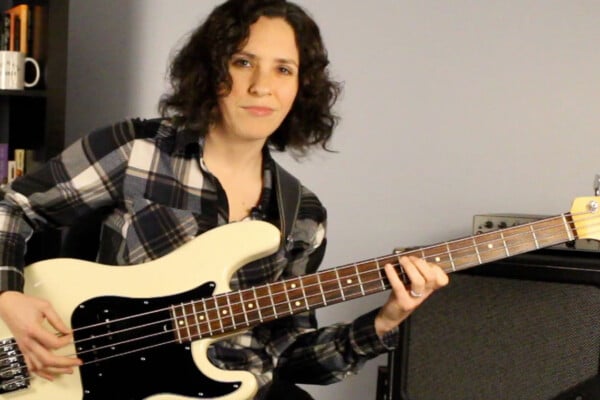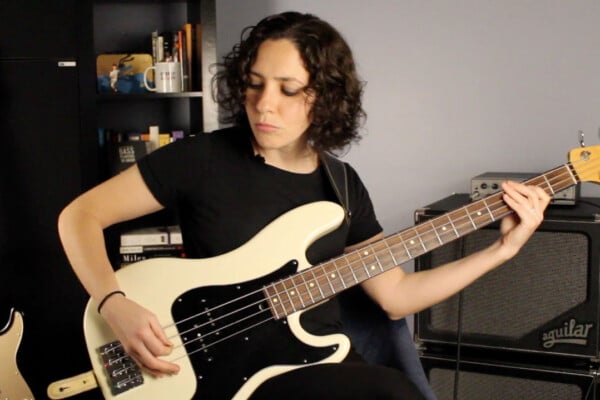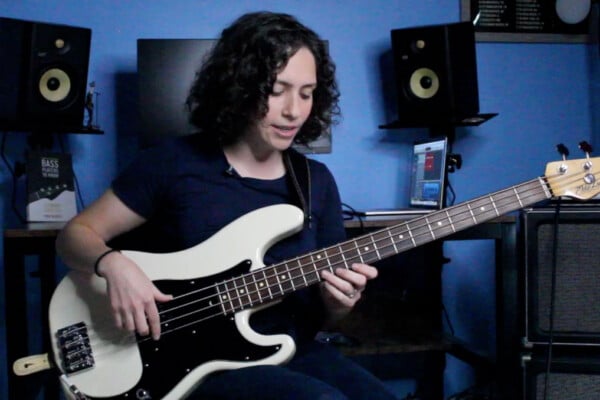Ask Damian Erskine: Following Up On Patterns
Q: I’ve almost gotten through all three videos, really good stuff in them. I really like the concept of knowing patterns/visualizations to have handy when your soloing, like your ascending 4ths, alternating major/minor, and alternating 6th/7th fingerings.
I think I got away from having a set of licks/patterns when improvising, which I can see now is a big mistake! Seems like you can add so much to your toolbox if those are at the ready too.
I’ve been transcribing a few patterns so I have them down (and I don’t forget them). Once I see they fit harmonically and using your target note, so no matter what symmetrical pattern I play, I’ll land on a good note.
Just wanted to see how the best way to go about organizing this stuff, do you have sets of patterns for major / minor keys?
Also I saw your column on how chordal playing helps way more then thinking what scale am I in, do you also apply certain patterns when following chordal arrangements and not sure what key your in?
Thanks very much man. Oh and killer CD too!
A: Thanks man! Glad you dig the youtube videos & disc!
These days I kind of think in major and minor, dim and dominant (jump back and forth between the relative Maj and min tonalities and everything in between) all at once. I’m more trying to see overall tonality from any position so I can be anywhere on the neck and leading with any finger without feeling ‘out’ of my comfort zone.
With the chordal thing, I used to work a lot on knowing my diatonic chords for any chord type (scale). So I would practice stuff like:
1. Grabbing a set of changes out the real book and walking diatonically WITH CHORDS, instead of just single notes, through the changes. I would sometimes do it in time like I was playing the song, other times I would just use the changes and not worry about how many beats there were in between changes, etc… Does that make sense?
For example, in a ii-V7 progression. say, D-7 | G7 | CMaj7, I would play (in chords) D-7. E-7, FMaj7 #11, G7, A-7, B-7b5, CMaj7
That’s an easy example in Cmaj. Use real book tunes though, because they’ll throw you and make you think (and listen!)
In regards to patterns, I kind of have a catalogue of shapes that I can use transitionally, or just to give me something to play in this moment hoping it leads to another idea (don’t forget to listen while using just a shape). I have worked out from where and pattern needs to start in order to end well and have categorized a bit of that for each tonality, I think. Like, in a Major key, this lick should start a Maj 3rd up from the root, for example.
Or diminished, play a dominant b9 scale or chord from a 3rd down. I’ve categorized things in that manner in order to be able to use any lick I have over any chord.
Eventually, they become second nature and a lot of my ‘patterns’ are strung in such a way that I don’t even realize that I’m playing patterns. I’m just weaving through changes and picking targets here and there and my fingers to the rest.
In the end, I’d love to have so much music in me that I don’t need patterns, I just hear a sound and know how to make it. I’m getting there. I do maintain that shapes and patterns are a great way to explore the instrument and sounds and a great way to begin to develop lines and solos. Ultimately, we should try and get away from them but, I believe, not until we’ve also explored them fully!
Don’t ever NOT do anything. Approach the music and the instrument (and life?) from all angles and you’re sure to develop some pretty interesting, unique and useful things.
Have a question for Damian Erskine? Send it to [email protected]. Check out Damian’s instructional books, Right Hand Drive and The Improviser’s Path.



